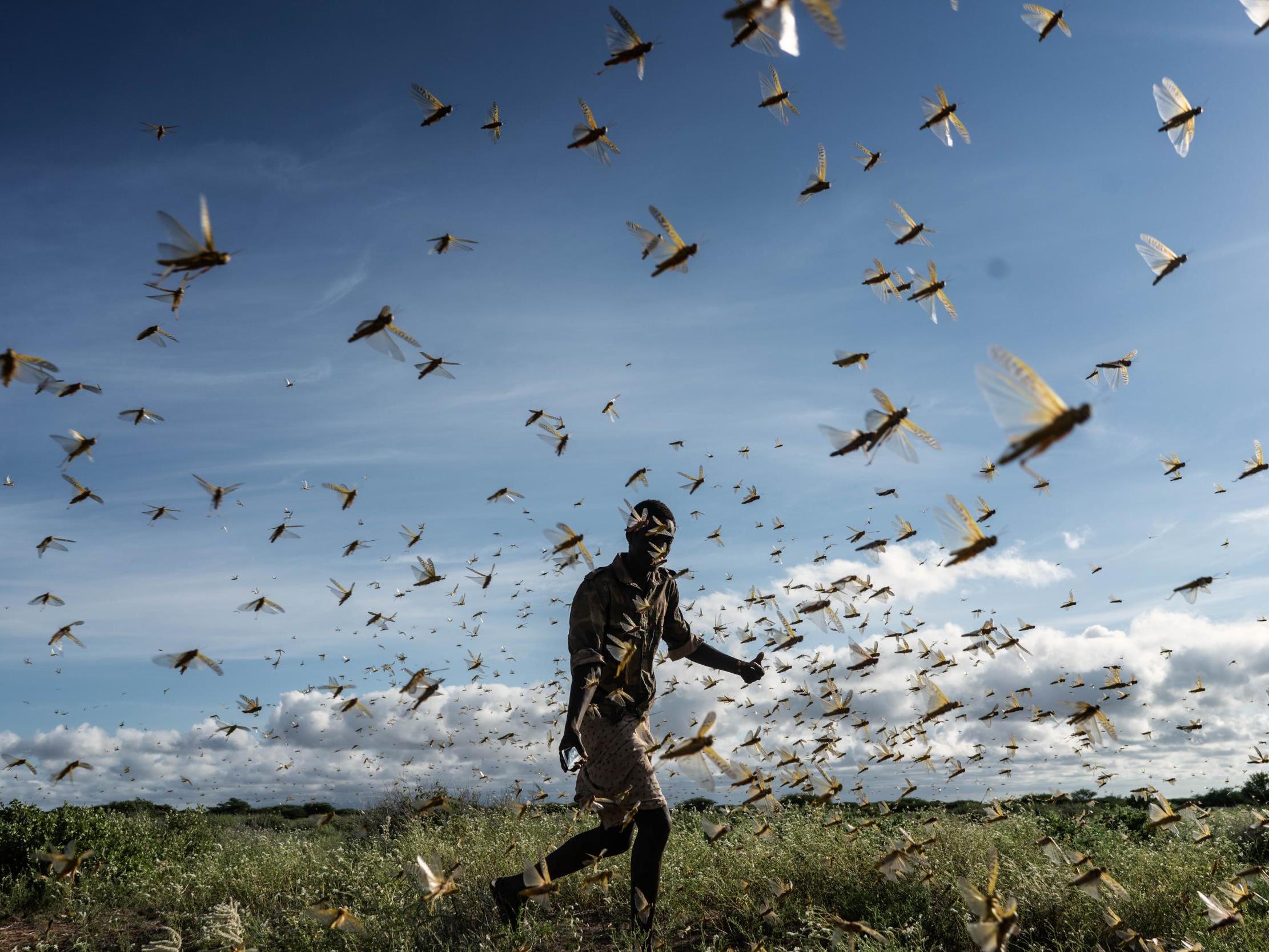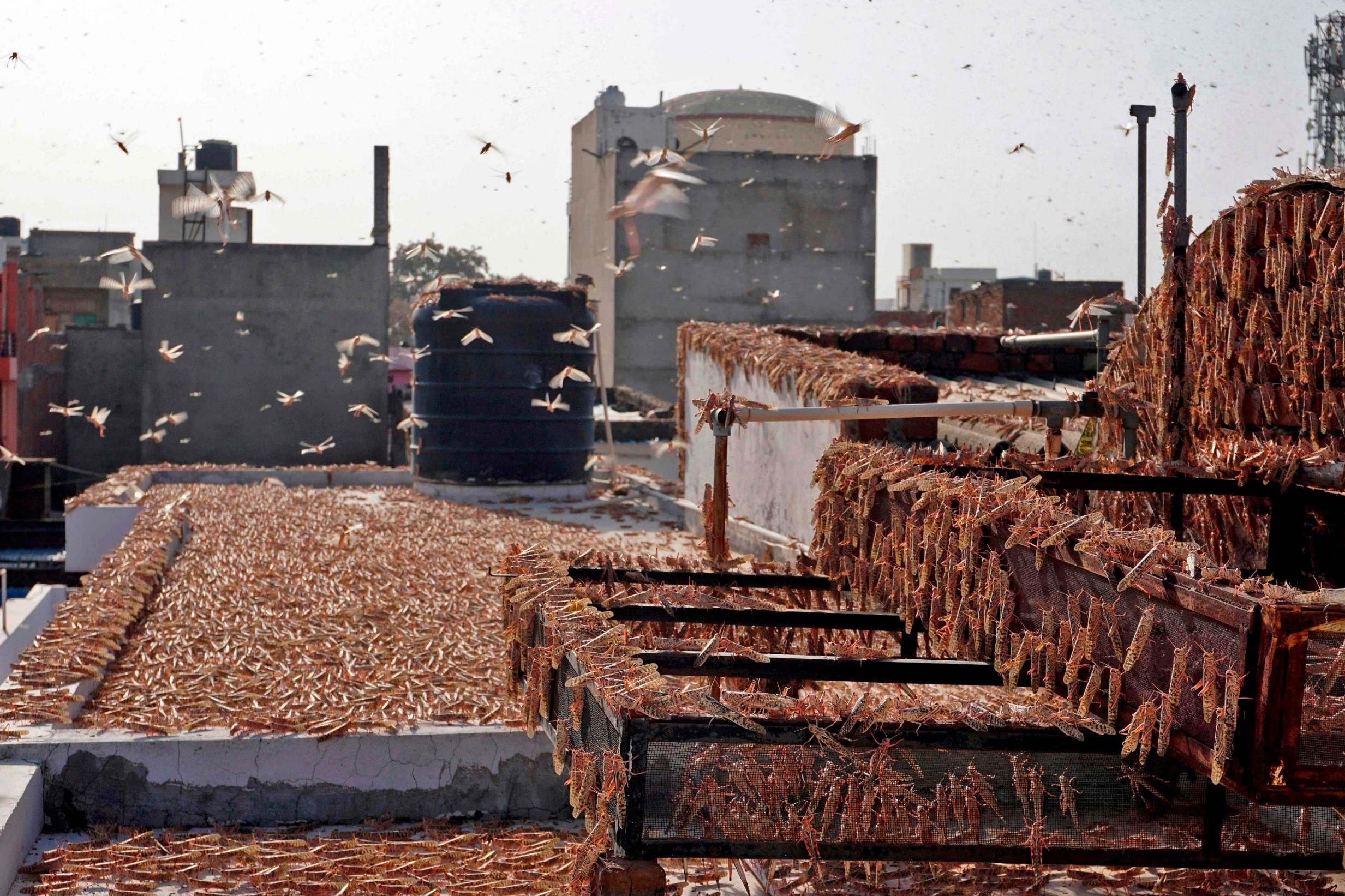Almost five million people at risk of hunger and famine as swarms of locusts ravage East Africa
Estimated tenth of the world’s population could be affected by most serious outbreak in 70 years, says International Rescue Committee

Your support helps us to tell the story
From reproductive rights to climate change to Big Tech, The Independent is on the ground when the story is developing. Whether it's investigating the financials of Elon Musk's pro-Trump PAC or producing our latest documentary, 'The A Word', which shines a light on the American women fighting for reproductive rights, we know how important it is to parse out the facts from the messaging.
At such a critical moment in US history, we need reporters on the ground. Your donation allows us to keep sending journalists to speak to both sides of the story.
The Independent is trusted by Americans across the entire political spectrum. And unlike many other quality news outlets, we choose not to lock Americans out of our reporting and analysis with paywalls. We believe quality journalism should be available to everyone, paid for by those who can afford it.
Your support makes all the difference.Close to five million people in East Africa could be at risk of famine and hunger as the ‘worst locust invasion in a generation’ continues to destroy crops, contaminate water sources and displace thousands of households, a new report has warned.
The infestation, which first appeared in the region last June and has already passed through a number of generation cycles, is feeding on hundreds of thousands of hectares of crops across at least eight countries, compounding an already dire food situation heightened by disruption from the Covid-19 pandemic and flooding.
As the most serious desert locust outbreak seen in East Africa in 70 years, an estimated tenth of the world’s population could be affected, according to the International Rescue Committee (IRC), a global humanitarian and aid group. A total of 4.9 million people could be plunged into crisis-level food insecurity, the IRC added.
The outbreak is hitting Somalia the hardest, with Kenya, Ethiopia, Uganda and South Sudan also heavily impacted.
And the IRC has warned that another round of hatching could produce swarms up to 8,000 times larger than the first generation, while calling for an increase in preventive measures to stop the locusts from ravaging crops and spreading across West Africa and to the Indo-Pakistan border.
Barri Shorey, senior director of economic recovery for the IRC, said: “The Desert Locust is the world’s most dangerous migratory pest.
“The worst outbreak in 70 years is combined with a year of drought and flooding, and now a Covid-19 pandemic preventing people from working and farming, poses an unprecedented risk to food security.
“Without an immediate increase of prevention measures, we could be on the verge of a famine like we have never seen before.”
A swarm of locusts just more than a third of a square mile can eat the same amount of food in one day as 35,000 people. The insects can travel about 90 miles a day and eat their own body weight in crops.

In Somali, which is still recovering from drought and massive flooding, more than half of the IRC’s supported communities have been affected by the latest infestation. Without immediate intervention, 3.5 million people in the country are expected to face a food crisis and 50-70 percent of cereal harvests could be lost.
Sahal Farah, community resilience committee vice chairman for Docol, an IRC partner organisation, said: “This is the worst locust invasion we have seen in our generation; it has destroyed pastures, contaminated water sources and displaced many pastoral households.
“The worst part is that we do not have the capacity to control it, and so far, we have not received any external support.”
Last month, the UN Food and Agriculture Organisation said significant gains had been made against locust encroachment in East Africa, with an estimated 720,000 tonnes of cereal saved from the swarms of migratory pests across 10 countries: enough to feed five million people a year.
However, agency chief Qu Dongyu stressed that more action is still needed to avert a food security crisis. “Our gains have been significant; but the battle is long and is not yet over”, he said. “More people are at risk of losing their livelihoods and worsening food security in the coming months.”
Join our commenting forum
Join thought-provoking conversations, follow other Independent readers and see their replies
Comments